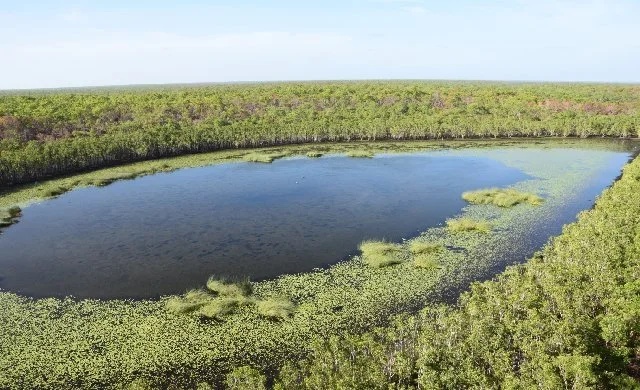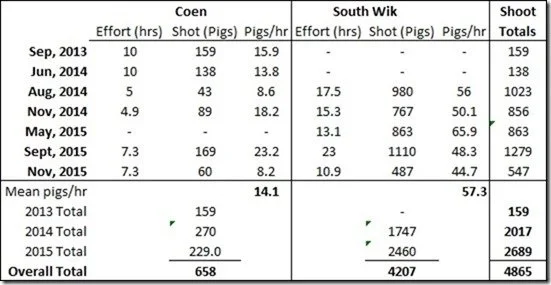Balkanu Pig Project / Progress Report
Some of the wetland areas are relatively untouched.
Ferals Australis was contracted to conduct pig culling activities as part of the Balkanu Pig Abatement Project.
Aerial culling was the chosen method for the initial reduction of pigs due to it being the most humane and efficient method in the circumstances. The area is large and remote with poor ground access and dense timber over a lot of it. This involves professional shooters in helicopters gridding the shootout zones efficiently at the appropriate times of the day, being the dawn and dusk periods. Pigs are usually concealed in dense vegetation during the heat of the day, making them impossible to spot from the helicopter. The pigs are dispatched with appropriate calibre firearms .308W or 12 Gauge shotgun and then a flyover is conducted to ensure all animals are humanely dealt with. We used 1 shooter who also acted as spotter and data recorder, in a Robinson R44.
Aerial culling for pigs only was commenced at Kalan on the 25th November 2015. Shooting was done in blocks to coincide with peak animal activity periods. There was a large fire burning on the southern block which made it quite difficult to locate the pigs. There were several carcases in the area which concentrated some of the pigs. The northern block was comparable to November last year with most wet areas dried up and the pigs in the riparian zones only. Sixty pigs in total were removed from the Coen area.
We started shooting at Wik on the 27th of November. The shooting was focused on the coastal flood plains and adjacent swamps that contain large areas of Bulgaroo reed beds when they are full. These are located within the designated shootout zones.
Progress on pig abatement
The shooting was conducted over 4 x 2.5 hour sessions. The animals were out in the open much later in the afternoon and back in cover earlier in the morning due to the heat. Four hundred and eighty seven pigs were culled during the aerial exercise in this area. Three pigs were culled on the ground. The main differences between this shoot and the September one was the extremely limited water available to the animals, the higher temperatures and larger areas of burnt country. This meant that the animals were concentrated in large groups on the remaining water.
It may seem that the overall numbers for the shoot are lower than normal, but it has to be noted that we didn’t cover the area of coast that included approx 40 km of new beach area. We also had some mechanical issues and extremely large thunderstorms on the last two days.The core area of the project that we have always worked within appears to have much lower pig numbers than previously.
The swamps and coastal plains overall are in much better condition.



